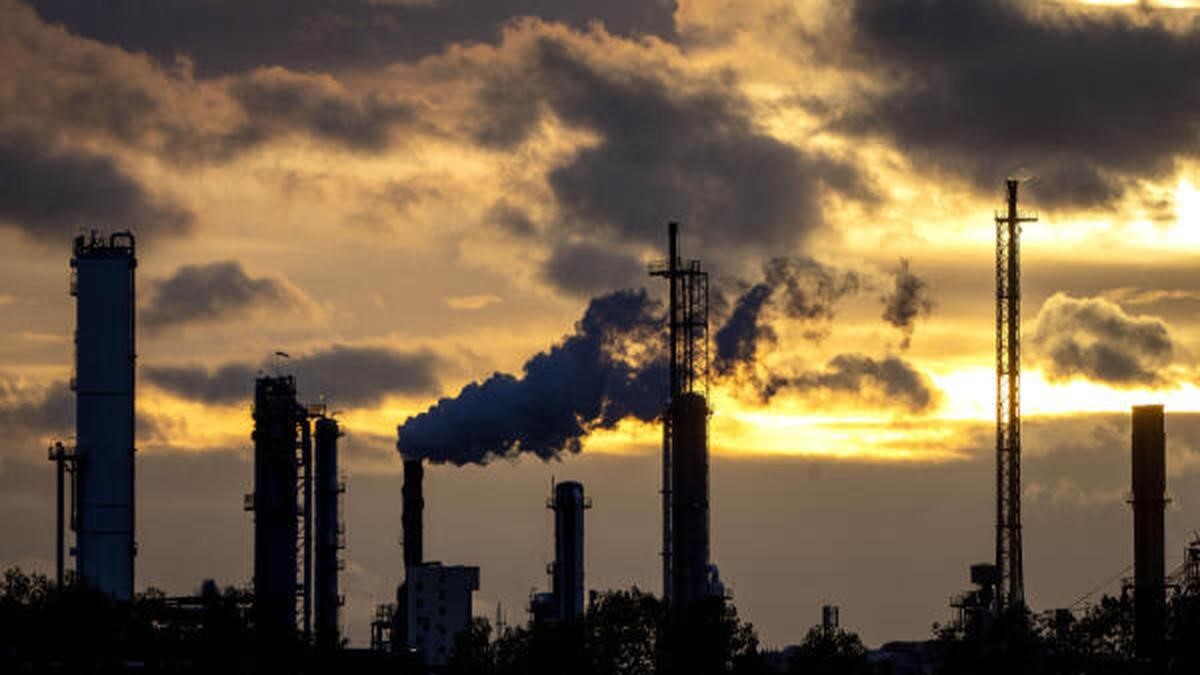Description

Disclaimer: Copyright infringement not intended.
Context: The U.N.'s World Meteorological Organisation has come up with a new Global Greenhouse Gas Monitoring Infrastructure that aims to provide better ways of measuring planet-warming pollution and help inform policy choices.
Details:
Background:
- The three major greenhouses gases are carbon dioxide, methane and nitrous oxide. Of those, CO2 accounts for around 66% of the warming effect on the climate.
- The increase in CO2 levels from 2020 to 2021 was higher than the average growth rate over the past decade, and methane saw the biggest year-on-year jump since measurements started.
- The 2015 Paris Agreement on climate change saw countries agree to cap global warming at "well below" two degrees Celsius above levels measured between 1850 and 1900 – and 1.5C if possible.
.jpeg)
Need:
- The WMO said there needed to be stronger scientific underpinnings of climate change mitigation actions taken under the agreement.
- There are still uncertainties, especially regarding the role in the carbon cycle of the ocean, the land biosphere and the permafrost areas.
- We therefore need to undertake greenhouse gas monitoring within an integrated framework in order to be able to account for natural sources and sinks.
Impact:
- The WMO's new platform will integrate space-based and surface-based observing systems, and seek to clarify uncertainties about where greenhouse gas emissions end up
- It should result in much faster and sharper data on how the planet's atmosphere is changing.

World Meteorological Organization (WMO):
- It is an intergovernmental organization with a membership of 193 Member States and Territories.
- It was established by the ratification of the WMO Convention in 1950.
- WMO became the specialised agency of the United Nations for meteorology (weather and climate), operational hydrology and related geophysical sciences a year later.
- The UN Economic and Social Council is the parent organization of WMO.
- WMO is headquartered at Geneva.
- WMO is dedicated to international cooperation and coordination on
- the state and behaviour of the Earth’s atmosphere, its interaction with the land and oceans,
- the weather and climate it produces, and
- the resulting distribution of water resources.
- It facilitates and promotes
- the establishment of an integrated Earth System observation network to provide weather, climate and water-related data
- the creation of standards for observation and monitoring
- the provision of weather, climate and water-related services - to reduce disaster risks and contribute to climate change adaptation etc.
- the coordination of research and training in meteorology and related fields
- Major reports published by the WMO are - Status of World Climate; Greenhouse Gas Bulletin.
|
PRACTICE QUESTION
Q) Which of the following statements is/are correct with reference to World Meteorological Organization?
a. The UN Economic and Social Council is the parent organization of WMO.
b. WMO is headquartered at Geneva
- Only a
- Only b
- Both a and b
- Neither a nor b
Answer: Option 3
|

https://www.thehindu.com/news/international/un-takes-step-towards-new-way-of-tracking-greenhouse-gases/article66587986.ece




![]()







